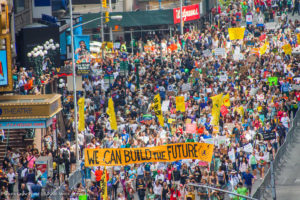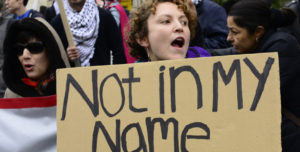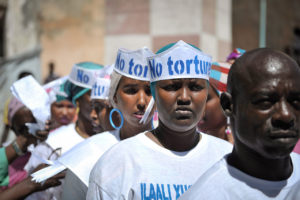“We were online and in quarantine – even in a very unimaginable situation, all the stages of this process were attentive to each phase of designing a campaign.”
– Lori Regattieri, Diálogo Brasil
In early March, we had a decision to make. As we were preparing for our in-person, five-day Campaign Accelerator training scheduled for 16-20 March in New York City, we asked each other: Do we cancel? Postpone? Or take a risk and try to run the training remotely?
The Covid-19 pandemic is not an equaliser—it exacerbates and worsens pre-existing systemic inequality. Just when campaigners need to continue and ramp up crucial social justice work, this was not the time to cancel. We decided that we had to adapt our work to address the collective well-being and urgent needs of campaigners in our network.
Naturally, we were nervous: Would this experiment work? The determination and hard work of our amazing trainers, Viv Benjamin and Mia Paz Cambronero, who led this public training (with the support of the MobLab facilitator team) paid off. In less than 10 days, we retooled and rebuilt our flagship, in-person Campaign Accelerator as a fully remote campaign design lab and training – without losing the key collaborative, immersive learning elements that make it so effective for planning creative, systems-based, people-powered campaigns. And we are grateful to our wonderful group of participants, who embraced the last minute shift and embarked on this journey with us.
Shifting a five-day workshop to virtual format involves much more than simply switching on our webcams. We built in principles and methodologies of creative and strategic collaboration that are inherent to our approach. We are lucky to collaborate with so many talented facilitators and allies who share their learning with us, and we will be doing the same. Here is some of what we’ve learned (so far!):
- Experiment, test, and iterate. As we prepared and experimented with different tools and approaches to run sessions virtually, we weren’t sure whether it would all work. We organised short practice sessions ahead of the training with our wider team to practice and test each module: we saw what worked, what didn’t, and we iterated accordingly. And will keep doing it.
- Engagement matters more on video. It’s easier for facilitators to “lose the room” in a virtual setting; we tried to ensure we kept presentations short and to engage participants every 2–3 minutes by inviting them to reflect, comment, ask questions, co-create group agreements, type straight into our shared slide deck and documents; to unmute, share their screen and present. Strong visuals and simple templates on shared slides and documents can really help.
- Build human connection. During an in-person training, we have more time to deepen connections over meals and breaks. Now, as all of us were dealing with this scary new reality, being on lockdown and facing uncertainty, we craved community and connection. We built in more time than usual to create a stronger “container”, safe space and build trust among participants. We used check-in and check-out sessions around a virtual table, personal storytelling and ice-breakers with intention, allowing participants to get to know each other, to share and to be vulnerable. And we decided to reduce the number of participants for our virtual cohorts.
- Get off screen and energize. We tried to ensure participants were not stuck in front of a screen in a large group all day, using a mix between virtual plenary, break-out groups, and individual work offline. We took regular breaks, invited participants to get comfortable and were flexible to shift things during the day. We didn’t rely just on what can be done virtually. We got people to use pen, markers and paper to draw and take notes; and objects from their own homes to spark creativity. We ran energizers virtually, brought in stretching and movement work – including dancing.
- An instant digital archive is very useful. One of the key outcomes of this new virtual format was learning how to best collaborate with remote teams to design a campaign strategy. In addition, with every artefact immediately digitised on shared slides and documents, participants have more reference material than they would in a traditional sticky-note setting as they co-create an instant digital archive of their work.
- Focus training on relevant real-world topics that affect participants. During our trainings we work on real case studies immersing participants in a collaborative process to design a campaign. With participants coming from different organisations and spread across the Americas region, choosing the Covid-19 pandemic as our focus resonated with everyone. Working on a rapidly evolving complex issue can be challenging, but it helped us ensure relevance, urgency and gave us a way to channel our energy looking for hope and actions to transform current systems.
- It’s possible to centre our audiences, remotely. We use design-thinking principles to develop campaigns that put people at the centre of the design process. During an in-person training we go out to the streets to interact and generate empathy with our potential audiences. For the virtual training we focused on interviewing people remotely and used social media to gather insights and get feedback on campaign ideas. And we will keep trying new ways to centre people, including those most affected by our unfair and unjust systems.
- Offer tech support and troubleshooting. We used different virtual collaboration tools (such as Zoom, Slack, Google docs and slides) that not all participants were familiar with. Taking time to get everyone up to speed while being playful early on, before getting into the content, is crucial so participants do not get distracted by the tech. Be prepared to troubleshoot when something goes wrong and make sure people can jump on the phone, if needed.
“The best way to get through the first week of coronavirus lockdown was to be in a digital space of like minded changers makers from all corners of the world to learn and support each other in this unprecedented, life changing time.”
– Adrian Escarate, Define American
We are constantly learning. There is a lot we still want to refine and adapt as we take these lessons forward ourselves; we will keep iterating on the content, pace and use of different tools and continue to share what we learn. We hope and anticipate that this virtual format will increase access for some campaigners (e.g. no travel costs), but we are equally aware that limited internet access is a barrier for many others, so we are looking for ways to keep making our trainings more accessible.
This is a time for even more creativity, collaboration, and agile campaigning. Now, it is even more important for us to not work in isolation, but to skill up, improve our campaign design, and bounce ideas off each other.
At MobLab, we are committed to helping more teams design and deliver systems-changing, people-powered campaigns. That’s why we’re adapting to these times and our community’s needs, by increasing our capacity to facilitate more Campaign Accelerator trainings and workshops. Check out our upcoming trainings and apply for a place.
You bring amazing people together for this training. I now feel like a more globally connected, and cross-topic connected organizer. Many more things seem possible to fix in the world right now! Thank you!
– Bonnie Barclay, Natural Resources Council of Maine




